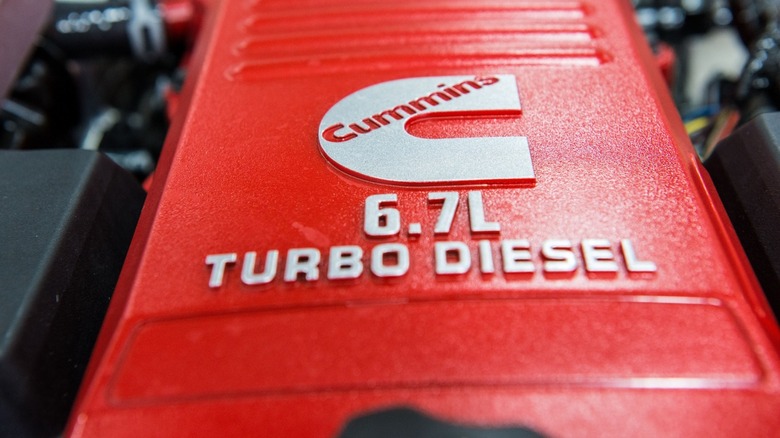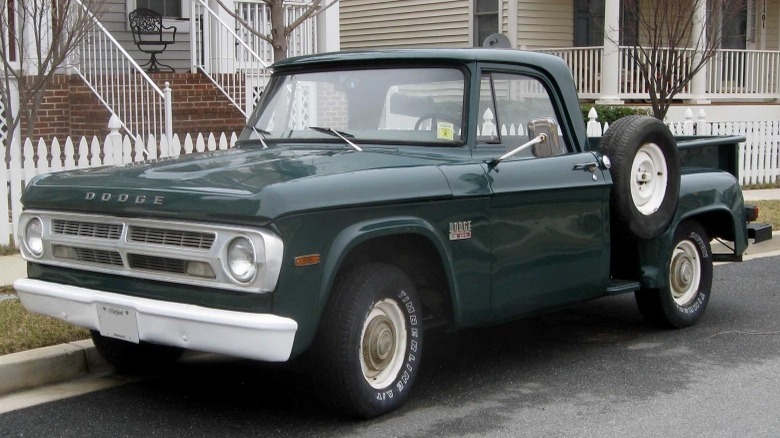When Did Dodge Start Using Cummins? (And The Diesel Engine It Used Before That)
The Dodge-Cummins relationship is arguably America's strongest automotive partnership. It began in 1989 when Cummins started supplying its B-series engines to Dodge for use in three-quarter-ton (Ram 250) and one-ton Dodge Ram (Ram 350) trucks for the 1989 model year. This was a culmination of a contract that dates back eight years, when Cummins invited Chrysler to review the B series engine in 1981, along with its market data.
The first Cummins engine to feature on the Dodge trucks was the 5.9-liter, 12-valve 6BT turbodiesel inline-six that generated 160 horsepower and 400 lb-ft of torque – the most torque for a three-quarter ton or larger diesel pickup truck at the time. The Cummins 5.9 turbodiesel is also often credited with pulling Dodge back from the brink of extinction. According to MotorTrend, Dodge trucks faced difficulties in the market prior to the marque adopting Cummins engines in 1989. This was due in part to the discontinuation of Chrysler's 440 cubic-inch big-block V8 engine in 1978 and the fact that the squared-off body styling had remained essentially the same since 1972 (until 1993).
Fortunately for Dodge, things completely turned around when the Dodge Ram trucks began offering Cummins engines in 1989. Per Drivingline, the initial Cummins-powered Dodge Rams were in such high demand that the higher-ups at Chrysler decided to temporarily stop accepting orders until 1990 because they needed time to both restock and increase production to meet the strong demand. As well as leveraging Cummins' popularity at the time, the Cummins-equipped Dodge Ram trucks were well-liked for their reliability, strong towing figures, robust power output, and massive tuning potential. Cummins produced the 5.9L 12-valve 6BT turbodiesel inline-six from 1989 to 1998 before replacing it with the 5.9L 24-valve version, which stayed on the market until the current 6.7-liter turbodiesel launched in 2007.
What diesel engine did Dodge use before Cummins?
Before turning to Cummins for oil burners, Dodge previously used a naturally aspirated 4.0-liter inline-six diesel engine supplied by Mitsubishi. This was in 1978 when parent company Chrysler still had a 15 percent stake in Mitsubishi Motors, as mentioned by The Autopian. With the energy crisis of the 1970s and stricter emissions rules pushing automakers toward fuel-efficient gas engine designs and alternative fuel sources like diesel, Dodge temporarily found its own answer in the Mitsubishi 6DR5 diesel engine powering Mitsubishi's Fuso trucks.
It made 105 horsepower and 169 lb-ft of torque and could be optioned with the Dodge D150, D200, W150, and W200 Dodge trucks. In 1979, its application expanded to include the D100, B100, B200, and B300 Dodge models. Mind, this was before the Dodge Ram pickup truck, which was only introduced about three years later in 1981. As with the first-gen Cummins engines, the Mitsubishi oil burner was noted for being reliable, but it still wasn't enough to keep its reign from being short-lived, as it was reportedly discontinued after the 1979 model year due to slow sales. Prior to the Mitsubishi engine, Dodge's other stints with diesels were with Chrysler's own diesel engines (1939 through 1942) and Perkins diesels (1960s).

